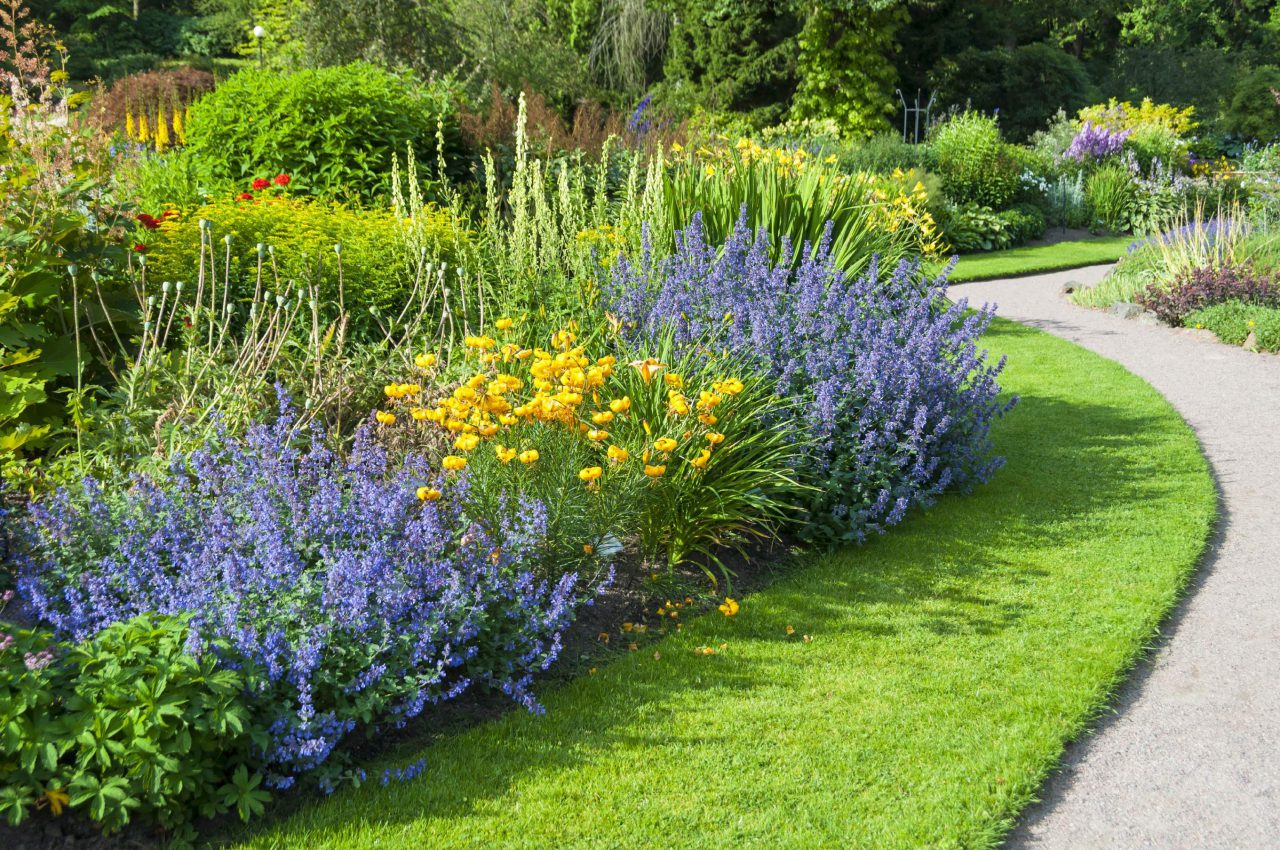Nothing can try the gardener’s spirit more than waiting for perennials to do their thing.
Annuals, bless their tidy souls, cast continual blooms throughout the growing season — and then conveniently die around the time when we begin to tire of them. But like everything else in the world of gardening, the distinction between perennials and annuals is not quite as clear-cut as we imagine. Many so-called annuals are actually tender perennials that cannot survive a hard frost.
Therefore, it’s useful to know which plants are dependable perennials for your area and which are tender perennials that will succumb to the first frost. For example, the Lantana "Miss Huff’" is a hardy perennial in my zone 7 garden, reaching her full size during her third or fourth growing season. Because the majority of lantanas are not hardy in zone 7, they are unable to reach their potential, lingering around as small, charmless mounds we must treat as annuals. They simply do not have time to do their thing.
Most of us switch to perennials because we like the idea of plants returning year after year. Many of us are surprised when we plant perennials, as we expect them to take off, and instead we have plants that just sit through the first and even second growing season. Keep in mind the old cliché when dealing with perennials: The first year they sleep/ the second year they creep/ and the third year they leap.
Unlike annuals, perennials are in it for the long haul. Some are short-lived, some are tender and cannot survive a frost, but most perennials are an investment for the long term. Consequently, during the first growing season, a newly planted perennial will concentrate on establishing a good root system, whereas the annual needs to produce seeds quickly to provide for future generations. Here in the South we plant many perennials in the early fall as our winters are relatively mild, which allow perennial root systems to get well established during the winter months.
Patience, alas, is a virtue I lack — and growing perennials demands patience. Perennials typically will start off small and mannerly. The tag will inform you how tall and how wide it will become, but I find that spaces in gardens are like blank walls in a house. They demand to be filled. Your choice is this: You can either live with the blank space, an impossibility for most gardeners, or you can fill it in, realizing that sooner or later you will have to make new arrangements for some of these plants. Because of my propensity to fill in these vacant spaces, I’m always surprised — and sometimes horrified — when my perennial border, with its overgrown plants, makes me feel like a slumlord.
Don’t despair, as there will be some wonderful surprises ahead for you. A plant sited three years ago will suddenly delight you. Sustainable roses may just sit through their first growing season only to grow unbearably ungainly during their second year. It is during the third year that they begin to give you hope.
A plant I came across recently was a Spigelia marilandica, a nondescript plant I’d apparently put in three years ago and conveniently forgot. Suddenly it put out some lovely red trumpet flowers, and it stopped me in my tracks, as it was a charming surprise. Realizing one Spigelia makes me happy, I immediately planted four more, which will make me even happier — but I have to wait three more years for this bliss to descend on me.
However, not all young perennials are happily spending their time putting down roots. I certainly have planted young plants that simply don’t make it or never flourish. Should this happen to you, relax, as you have just joined a long list of knowledgeable gardeners experiencing the death of a plant.
The reasons for the demise of a young perennial are many. Some simply won’t like your soil. Here in the Piedmont section of North Carolina, my soil is on the acidic side, and I know, if I’m going to grow roses successfully, I have to make it slightly less acidic by spreading lime around. Water is also a concern: Clay soils with their minute particles retain too much water while sandy soils with their larger particles permit the water to seep through too quickly. Many perennials need water on a regular basis but resent sitting in it. Like us, roots need oxygen. This is one of the many reasons gardeners are so fanatic about compost, which both lightens clay soils and makes sandy soils denser.
I believe in building up my soil rather than relying heavily on fertilizer, but occasionally it is necessary to use it. Last summer my daylilies — and I have many — did not perform particularly well. Now nothing is easier to grow than a daylily, and, because there was no evidence of disease, I subsequently applied a slow-release fertilizer. They perked up and grew to such an extent that I realized as valuable as compost is, it provides relatively little nutrition.
Gardens get shadier the older they get, so some perennials fail because they’re now not getting enough sun. I planted a lovely climbing remontant rose, "Cécile Brünner," but failed to consider that the leaves of my neighbor’s trees would cast shadows when they appear. Consequently "Cécile" blooms beautifully for me only in the early spring.
Lastly, some perennials are naturally short-lived. Perhaps some of you have an older Daphne, but here in the North Carolina Piedmont, Daphnes — even at the Sarah P. Duke Gardens — rarely last past the age of five. One moment they are fine and in the next one they are gasping their last breath for unknown reasons.
Perennials can go through a horrid, gawky adolescence before succumbing to adulthood. Consequently, when assessing your garden — and fall is a good time to do this — keep this in mind before you find yourself yanking out perennials. It’s okay to remove plants because you don’t like them. My rule of thumb, however, when dealing with perennials is this: I wait three growing seasons before deciding whether I shall keep a particular plant or not. That ugly duckling frequently turns into a swan.
As a gardener, you have every right to dislike a plant, but before you make up your mind, give it a chance. There probably was a reason you bought it in the first place. If after three years you still dislike it, by all means get rid of it. After all, it is your garden.









